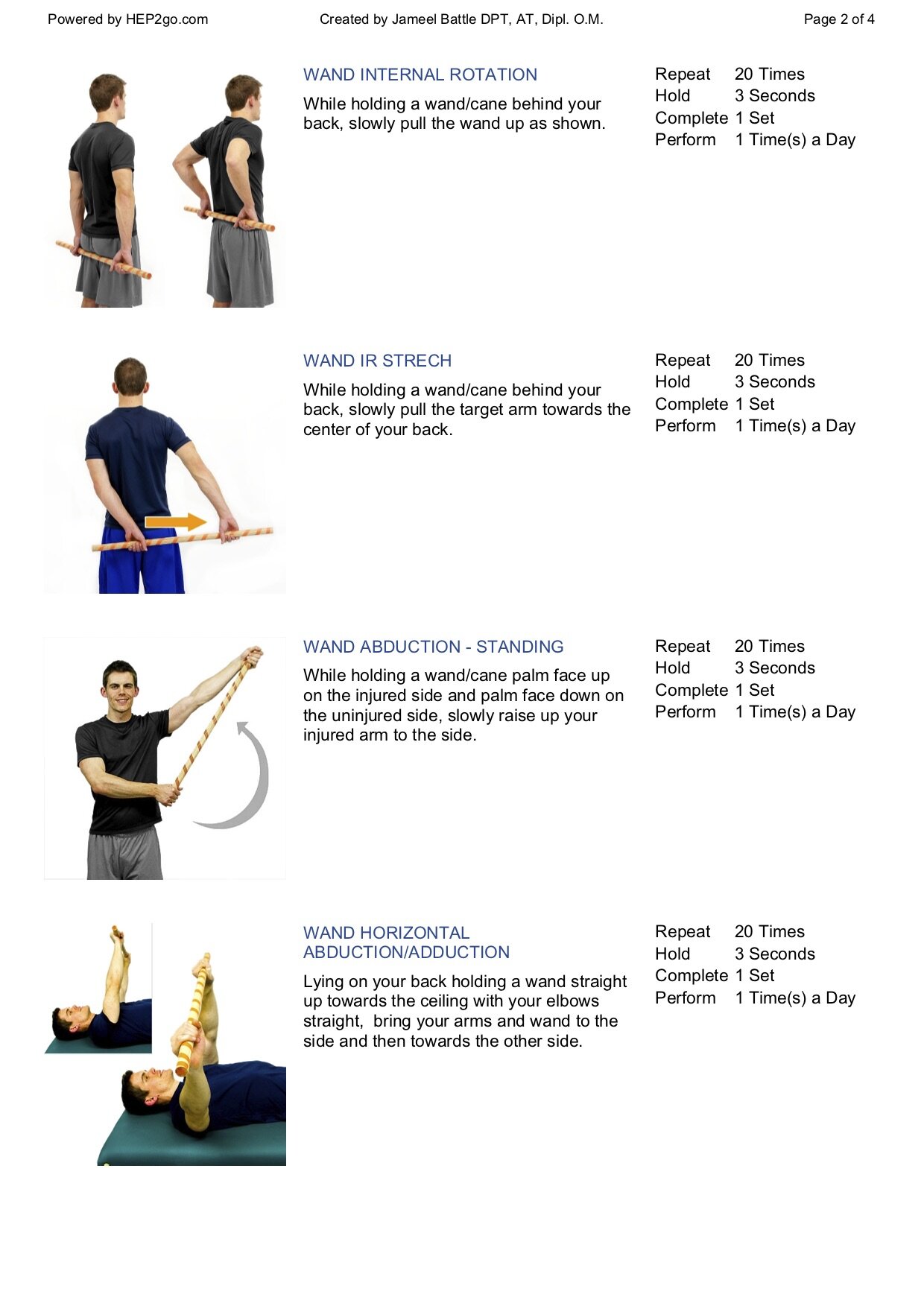HEP: Frozen Shoulder
Patient Education
What’s going on?
Sometimes the shoulder can get very painful and stiff. We don’t even know why it happens many times. This is a fairly common problem so don’t be afraid. It gets mostly better on its own, it just takes some time.
How long will it take?
Stage 1 may last up to 3 months and is usually the most painful phase, don’t worry there are medications and injections that can help you get through this phase!
Stage 2 can last 3 to 9 months and is known as the “painful” or “freezing” phase where your shoulder begins to get really stiff. It is just part of the process so don’t be afraid.
Stage 3 is known as the “frozen” stage where you have some pain and your shoulder will ell stuck. This may last from 9 to 15 months.
Stage 4 is known as the “thawing” phase where the pain begins to get better and through there may still be stiffness, you can really begin to exercise it and restore your range of motion. This phase may persist from 15 to 24 months after the onset of symptoms.
Don’t worry, research suggests that even if you are still a little stiff and painful at 12 to 18 months, many patients report minimal to no disability!
How will we treat your condition at IHSM?
At IHSM, a doctor of physical therapy will perform a detailed physical examination to determine what specific phase you are in—if it is the very painful phase, we will focus on helping you with your pain (using acupuncture heat or electrical stimulation) and minimizing motion loss with low-intensity manual therapy and pain-free ROM exercises.
We will also show you a position of comfort and modifications of daily activities to protect the irritated tissue.
If it is the phase where you are mostly stiff, we will spend time moving and stretching your shoulder to help you gain range of motion. You will also be given exercises to help you restore mobility to your shoulder.
In this phase, we will also assist you in how to use your new motion and begin to move in more normal ways.
Your physical therapist will help make sure that your range of motion is restored so that you can comfortably lift your arm overhead and reach behind your back.
Modalities such as acupuncture, ice, infrared heat or electrical stimulation may also be used to control the pain or inflammation.
What can you do to help yourself?
Remember in the painful phase, take your medication. Also, keep your arm moving in short pain-free arcs of motion, this will help reduce the motion loss.
In the frozen and thawing phase, where your shoulder is mostly stiff, range of motion exercises to free up your shoulder should be done. Also, don’t forget to stretch the shoulder for stiffness and hold it briefly to restore your motion.
If any of the stretches or exercises aggravate your symptoms, let your physical therapist know so they can adjust your home exercise program.
About IHSM
Integrative Health and Sports Medicine, LLC is a one-stop health and wellness center. Our mission is to restore our patients to a healthy, pain-free, and productive life. By combining orthopedic physical therapy techniques, sports medicine, acupuncture, and Chinese medicine, we are able to treat conditions and achieve results in cases that have not responded well to modern Western medicine.
We are located in Cincinnati, Ohio. Please email us at info@ihsm.org to schedule a consultation and let us help you on your journey to optimal health.




